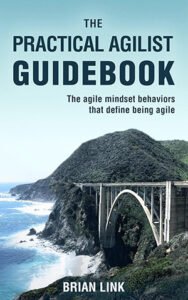|
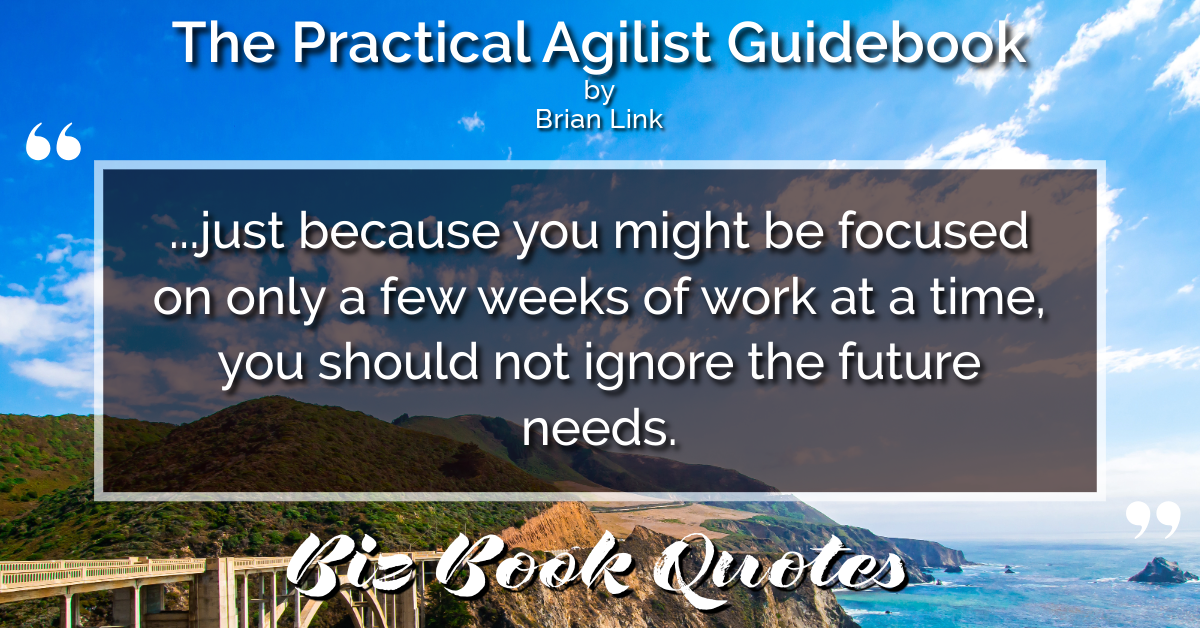
|
The Practical Agilist Guidebook:
…just because you might be focused on only a few weeks of work at a time, you should not ignore the future needs.
|
217 |
|

|
The Practical Agilist Guidebook:
…coordinated goal-setting strategy [OKRs] is easy to say and very hard to do.
|
225 |
|
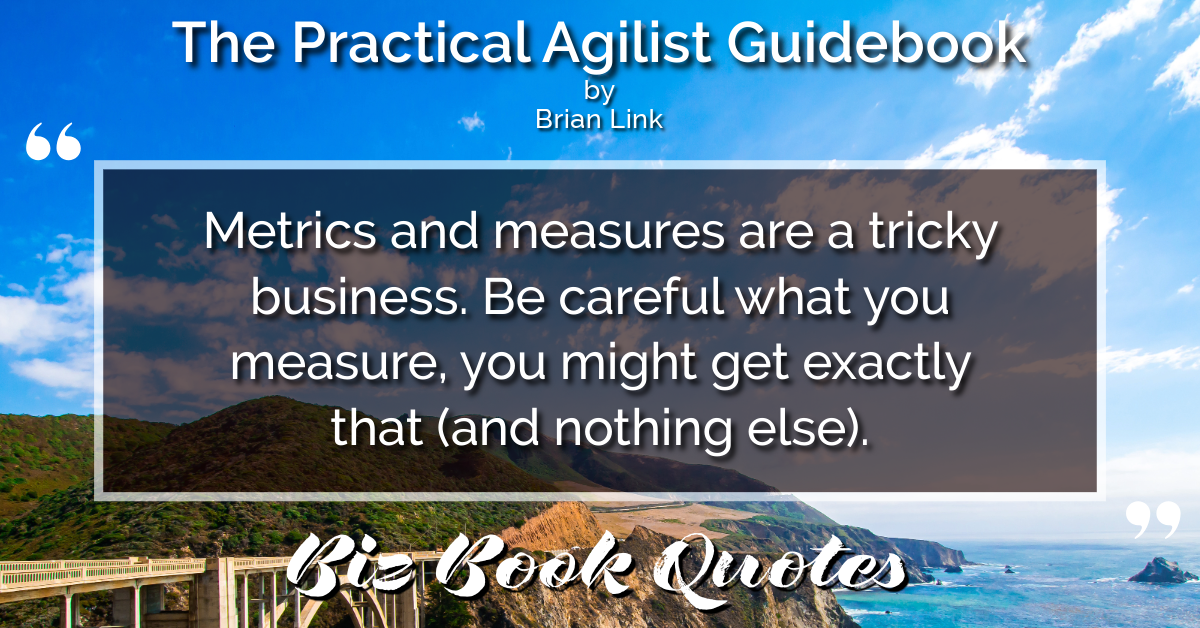
|
The Practical Agilist Guidebook:
Metrics and measures are a tricky business. Be careful what you measure, you might get exactly that (and nothing else).
|
226 |
|
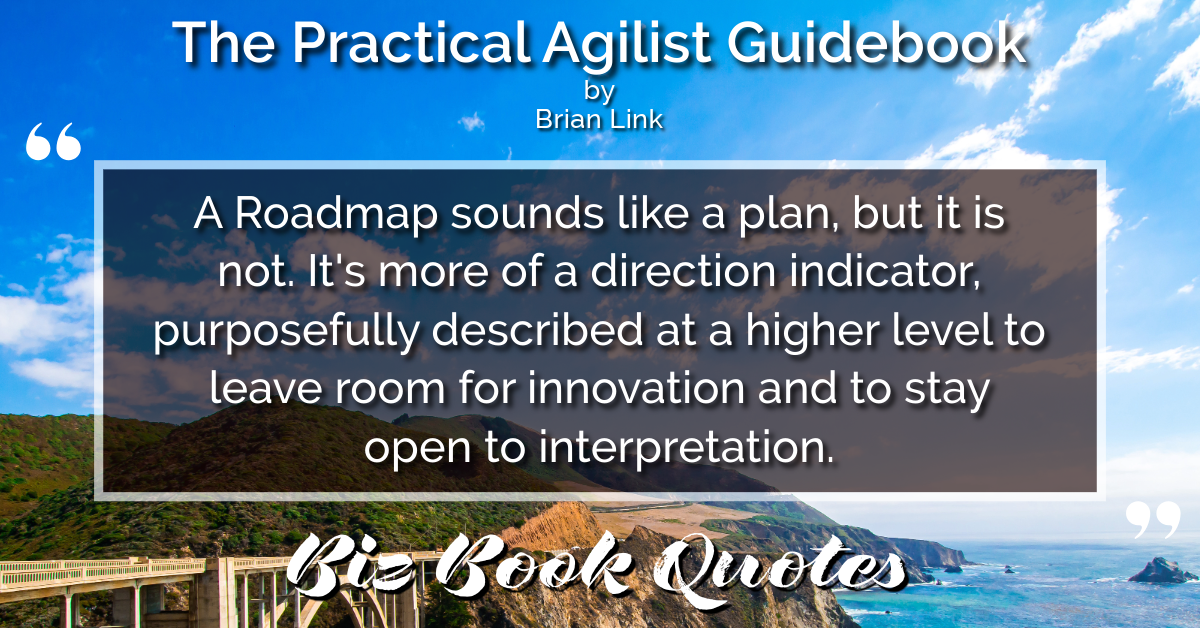
|
The Practical Agilist Guidebook:
A Roadmap sounds like a plan, but it is not. It’s more of a direction indicator, purposefully described at a higher level to leave room for innovation and to stay open to interpretation.
|
236 |
|
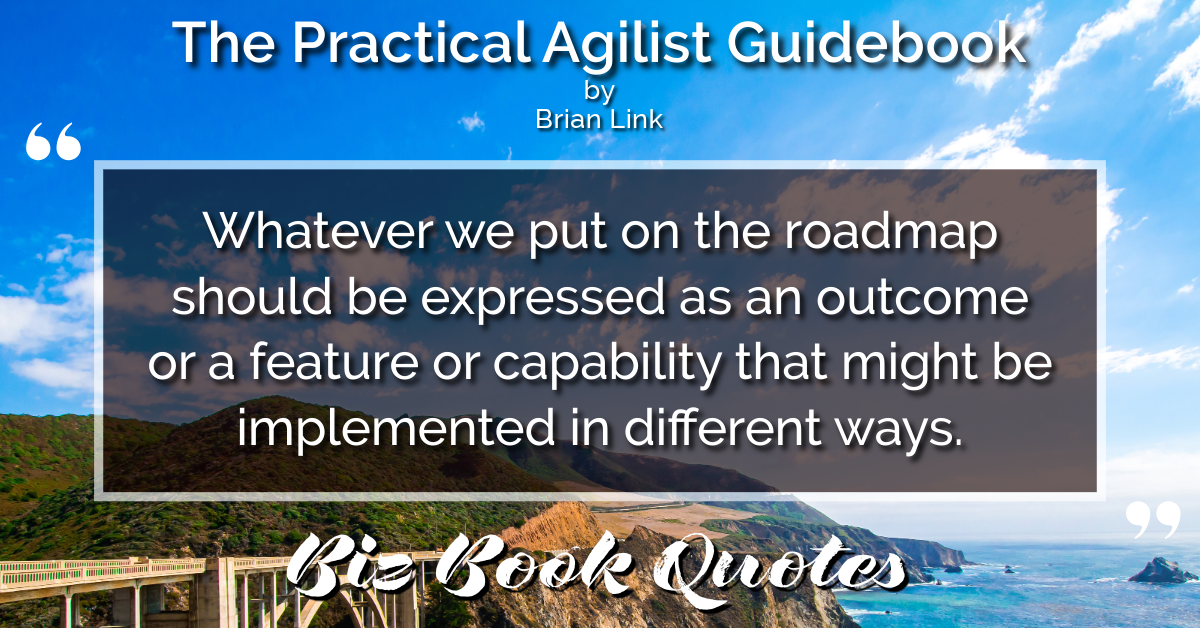
|
The Practical Agilist Guidebook:
Whatever we put on the roadmap should be expressed as an outcome or a feature or capability that might be implemented in different ways.
|
237 |
|

|
The Practical Agilist Guidebook:
Higher quality is almost always derived from automating a process than continuing to do it manually with humans. There are clear time savings involved as well.
|
246 |
|

|
The Practical Agilist Guidebook:
The most mature teams own the end-to-end stream of value creation through delivery.
|
252 |
|
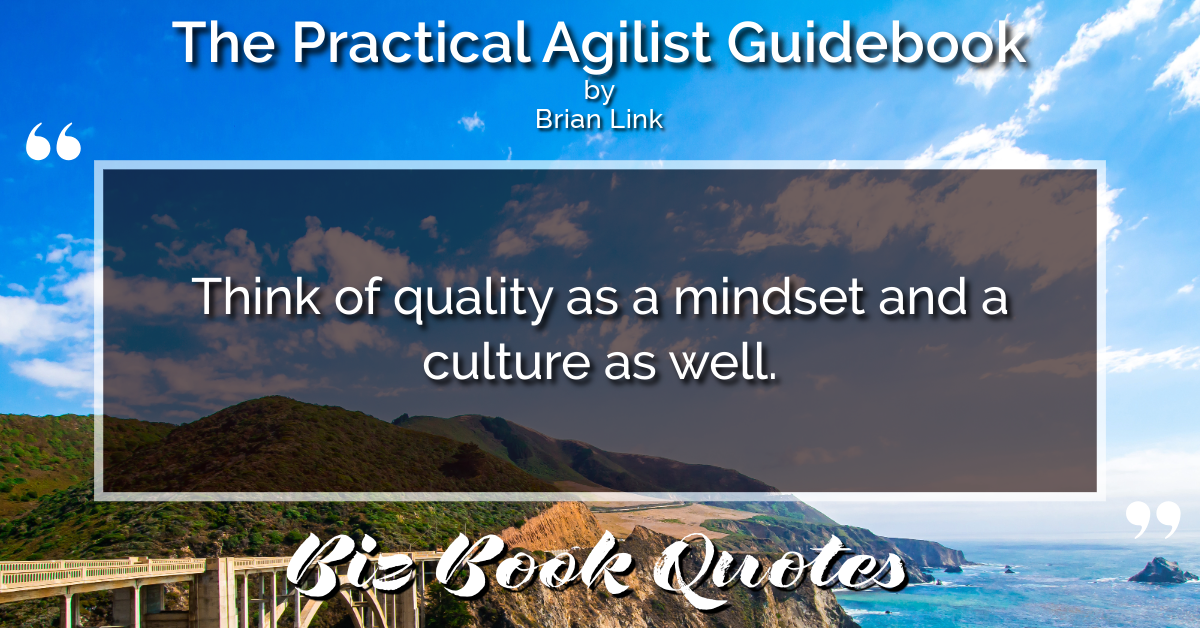
|
The Practical Agilist Guidebook:
Think of quality as a mindset and a culture as well.
|
254 |
|
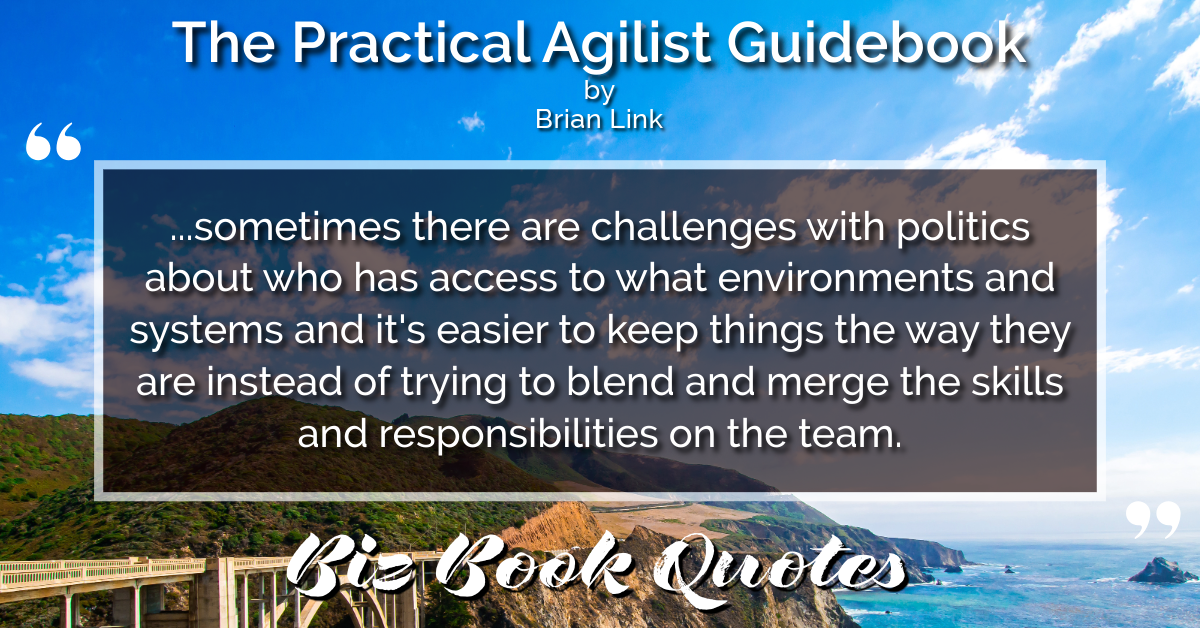
|
The Practical Agilist Guidebook:
…sometimes there are challenges with politics about who has access to what environments and systems and it’s easier to keep things the way they are instead of trying to blend and merge the skills and responsibilities on the team.
|
261 |
|

|
The Practical Agilist Guidebook:
…the concept of blending roles leads to much more flexible team processes and behaviors.
|
261 |
